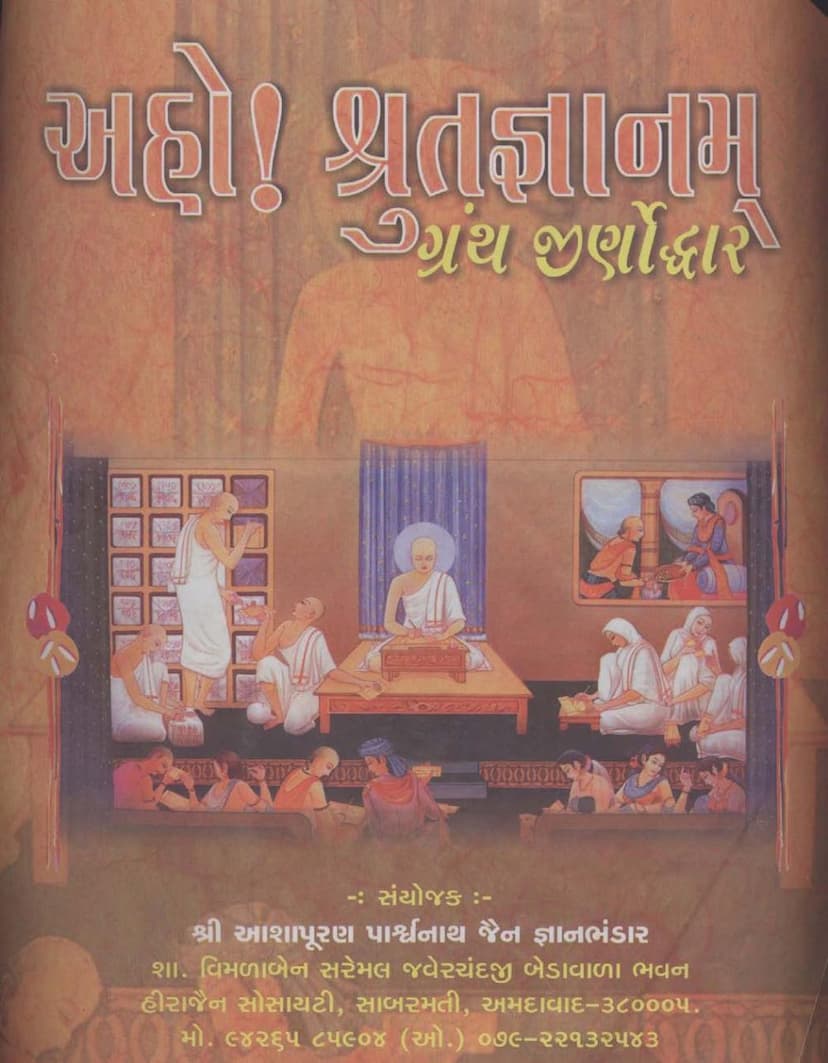Jain Lekh Sangraha Part 2
Added to library: September 2, 2025

Summary
Here's a comprehensive summary of the Jain text "Jain Lekh Sangraha Part 2" by Puranchand Nahar:
Book Title: Jain Lekh Sangraha Part 2 (Collection of Jain Inscriptions, Part 2) Author: Puranchand Nahar Publisher: Puranchand Nahar Catalog Link: https://jainqq.org/explore/009679/1
Overall Purpose and Content:
"Jain Lekh Sangraha Part 2" is a significant compilation of Jain inscriptions, numbering from 1001 to 2111, continuing the work started in Part 1. The primary aim of this collection, as stated in the preface, is to preserve and present historically valuable Jain inscriptions, particularly those found on ancient manuscripts and artifacts. The author, Puranchand Nahar, meticulously gathered and organized these inscriptions from various Jain temples, monasteries, and museums across India. The collection aims to provide scholars and researchers with access to primary source material related to Jain history, art, architecture, and religious practices.
Key Themes and Contributions:
-
Preservation of Historical Records: The book serves as a critical repository of inscriptions that are often found on idols, temple pillars, stone tablets, and manuscripts. These inscriptions provide invaluable information about the dates of important religious events, the reigns of kings and dynasties that patronized Jainism, the lineage of prominent Jain acharyas, and the geographical spread of Jainism.
-
Biographical and Chronological Information: A significant portion of the inscriptions contains details about the authors, commentators, editors, and patrons of the Jain works. This includes names of acharyas, their gacchas (lineages), and their samvat (years), which are crucial for establishing Jain historical timelines and understanding the development of Jain traditions.
-
Art, Architecture, and Iconography: Many inscriptions are found on sculptures and architectural elements. They often describe the material of the idol (stone, metal), the deity it represents (Tirthankaras like Rishabhnath, Parshvanath, Mahavir, etc.), and the specific occasion for its installation (e.g., by a king, a merchant, for merit). This sheds light on the artistic styles and architectural practices prevalent during different periods.
-
Religious and Philosophical Content: The inscriptions themselves, though often brief, can offer glimpses into Jain philosophy, rituals, and devotional practices. They mention the establishment of temples, the installation of deities, and the contributions of various individuals and communities towards the upkeep and expansion of Jain religious sites.
-
Geographical Reach of Jainism: The locations from which these inscriptions are sourced (e.g., Gujarat, Rajasthan, Uttar Pradesh, Bihar, Bengal) highlight the widespread presence of Jainism across different regions of India over centuries. The index of places further aids in mapping this historical distribution.
-
Scholarly Collaboration and Dedication: The book acknowledges the efforts of various scholars and institutions involved in the collection and preservation of these inscriptions. The preface mentions the inspiration from revered acharyas and the support from organizations like the Shri Ashapuran Parshvanath Jain Gyan Bhandar.
Structure and Organization:
The book is structured to present the inscriptions systematically. It includes:
- Numerical Listing of Inscriptions: Each inscription is assigned a serial number (from 1001 to 2111 in this volume).
- Details of Each Inscription: For each entry, the book typically provides:
- The name of the book or text to which the inscription belongs.
- The author/commentator/editor.
- The language of the inscription.
- The location where the inscription was found.
- The actual text of the inscription, often transcribed and sometimes with annotations or modifications.
- The date (Samvat year and AD) and the specific lineage of acharyas mentioned.
- Indices: The compilation includes various indices, such as:
- Index of places where inscriptions were found.
- Glossary of names of acharyas.
- List of Kings and their Samvat years.
- List of "Pratishthasthan" (places of installation).
Notable Aspects:
- "Aho Shrut Gyanam": This phrase, meaning "Oh, the knowledge of scripture is great," appears frequently, emphasizing the reverence for Jain scriptures and learning.
- Jirnoddhar (Restoration): The project of scanning and reprinting ancient manuscripts is highlighted, indicating a significant effort to preserve the Jain heritage.
- Challenges and Dedication: The preface by Puranchand Nahar reveals the immense effort, time, and resources dedicated to this monumental task, acknowledging potential errors due to the difficulty and time-consuming nature of the work. He also addresses the challenges faced, including disputes and opposition from certain sections of the Jain community.
- Historical Significance: The collection is recognized by scholars like Pt. Gaurishankar Ojha as being invaluable for historians and the Jain community, providing definitive dates for many acharyas and events.
In essence, "Jain Lekh Sangraha Part 2" is a scholarly and exhaustive compilation that documents a vast number of Jain inscriptions, serving as a foundational resource for understanding the historical, religious, and cultural landscape of Jainism in India.